
Switch on / off?
Switch-Off in Brazil
Last year, with a well-defined organizational chart, it was promised that the first Analog TV transmitter would be turned off, leaving the path to spread the digital signal in the air.

But this year Gired, Teles and TVs reached a new agreement on the switch-off of unanimous way, the shutdown of analog TV should be delayed due to a number of details, for example the release of the 700 MHz band and the major events such as the Olympics, Elections and another World Cup in 2018.

Rio Verde, in the interior of Goiás state, already was to have only digital signal on the air from 30 November, last year. However, the percentage of homes able to receive the signal was 79%, below the target. To achieve the goal of this challenge, many converters with interactivity and Ginga C will be distributed to members of the Bolsa Família.

One of the criteria to achieve the goal is to reach 90% of households that only have cable TV and, for example, more than two cable points at home and a third older TV. Homes with DTH, C band do not enter the account. Thus achieving the goal more quickly and effectively.
Until February 29, the first city in the switch-off, the stations: SBT, Band, Record and Globo TV leave the analogue to history. Some stations like Canção Nova, Rede Vida and Record News already operate 100% digital.
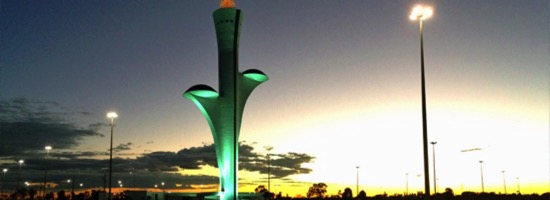
Reaching the goal, Brasilia, will be the real driver with shutdown until October, and the only capital to have 100% of the digital broadcast signal, of course, if all goes well and there was no further discussion. Within this package, a thousand cities by 2018 must follow the federal capital.
Meanwhile, some alerts have begun to be presented to the public about the shutdown, such as logos and texts in informative stripes. Campaigns must adopt the aspect ratio 16:9 in transmissions, except for programs that have been recorded in 4: 3 originally. As an example, TV Globo, use an “A” indicating that the reception of the channel is still Analog.

We can only wait for the next chapters of this novel, and hope that the happy ending comes quickly and preferably in Full HD format.
Read also the column i wrote last year about the same subject: Switch-Off in Brazil
UPDATE 23 feb 2018: Brazilians left waiting for DTT
UPDATE 13 apr 2018: 90 Million Brazilians DTT Ready
We would like to thank Marcel Almeida for writing for us.
More info you can find on his LinkedIn: br.linkedin.com/in/marcelmg77/en or follow him on Twitter @marcelmg77
Mentioned:
Gired: website
TVs: website
Anatel: website
Ministry of Communications (MiniCom): website
TV Globo: website
Rede Bandeirantes website
SBT: website
RedeTV: website
Are Audio Visual events in Brazil prepared for international?
Are Audio Visual events in Brazil prepared for international?
We visited some events in Brazil to find out.

This year BroadcastBrazil.com and some foreign visitors had been visiting some of the most important Audio Visual exhibitions in Brazil. AES Brasil EXPO, Church Expo 2015 and SET EXPO 2015. We also paid some attention to Church EXPO and the ABTA 2015 on the Broadcast Brazil’s blog. We are also familiar with the NAB and IBC exhibitions in which we attended ourselves past years.

AES Brasil EXPO and the Church Tech EXPO were planned on the same days. I am honest when i say that i did not really check far in front where exactly both were organised, i just checked AES on this a few weeks before the event would take place. I thought both events were located in the same exhibition building because of the dates they were held…. and i was not the only one it seamed. Than i found out that they were both on another exhibition location? For me as a visitor this is not really a problem, It just costs travel time…. in this case it cost me another day. But i think for the companies who hired some space in one of the both exhibitions would have preferred one location for both events… just to attract more visitors. Because even the big guys have a budget to spend each year and to be on both was impossible for them.
Trying to register AES Brasil EXPO 2015 as a foreigner was … special.
First thing to do is online register to attend the event for free, and that is also the start of…. some surprices. Because we put our selfs in the feet as a foreign exhibition visitor we attended the english part of the website which is given as an option on the top of the website by a little english flag. So far so good.
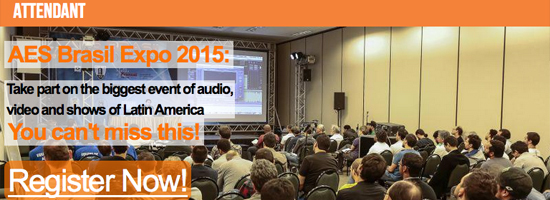
As ‘Attendant: we clicked on REGISTER NOW! This leads to a page in portugese for exhibitors.. ok? After some clicking thru the website menu we found another link to register. As you can see in that english menu that there are also options in portuguese?

We tried to register again. With some help of Google Translate we managed pretty wel. After filling in the form in a Safari browser on an Apple we had to stop because the form gave a ‘popup’ window that we were not capable to click away. Only a Forced Quit of the browser saved us. Let’s try Firefox than…. that worked much better. But … the links now leads us now to the Portugese register form? There they ask (of course) to attend by a ‘CPF number’ . As you may know… foreigner visitors, except foreigners who live in Brazil, do NOT have a CPF number.
We found out by clicking the other options in the same menu that not one result was something a foreign visitor to AES Brasil EXPO can use. It was available in Portuguese, or not available at all. It all seams that the website part for foreigners was not finalised yet.
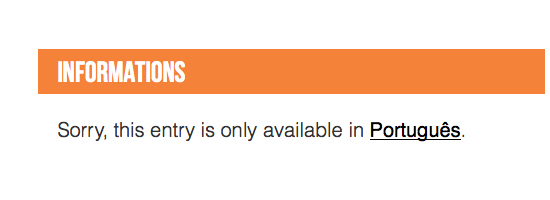
After filling-in as much as we could in the portugese form, also by adding info like DDD 019 TELEFONE 12345678 we clicked CADASTRAR. And that the following happened. Nothing! No message… no reply by an email. NADA.
Meanwhile we contacted the event organiser by the contact form on the same website, after 2 weeks we did not get any answer from that side. We posted a message on the Facebook page of the event organiser … we got an answer…. in English. They said not to worry because i was registered!
Hi René! Don't worry: You are already registered! You just have to come to the AES Brasil Expo 2015 and show yr professional card or any personal doc at the registration desk in the venue. We deserve very nice time in São Paulo. Thanks for coming and any doubt, let us know, ok? Regards from Brazil!
They also promised to fix the problems on the website before the event. That is also good news.
So… All done… so let’s go to São Paulo. When we arrived at the AES Brasil EXPO it seams at the desk i was not registered at all and have to do a manuel one at the desk… with a pencil. Not one of the people behind the desk at Expo center North spoke english, so it was not easy for us to explain ourselves. It took time and it created a long line behind us with people who also want to enter this exhibition. It became even worse because other (not patient) visitors in the line said that we have to speak portuguese ‘here’. Really? I told them in my best portuguese that we do or best, but i am a foreign guest visiting this exhibition in Brazil.
For us this was a bad entry on this exhibition. Than we found out that it was….. small….. very small. We knew this exhibition from past years, but we would not expect that it had shrinked this way. The website problems were also never solved, the picture below was from a screenshot of the day the event started.

Besides these problems we also missed a FREE WIFI on location in which could be a good service for the visitors. Food and drinks were well arranged in the back of the event hall. And we still managed to network with visitors and companies ![]()
Onto the next one. Church Tech Expo on the other side of São Paulo.
The expo organised by Panorama was much, much better arranged. As on the website as on location all went very smooth…. no problems with online forms what so ever, The exhibition was also much bigger and diverse than the AES EXPO. We really enjoyed this exhibition where there was space enough to walk, to talk en look around. Some special things were there to be seen like some new OB-vans and Uplink SNG vans, Jibs, camera’s etc. etc.
There were just some things we missed here.
- Free fast WIFI on location.
- And a bus that brings you really back to the metro station and not dumps you… closeby. We have had a walk in the dark a few blocks back to the metro station, we just followed others from our bus because we did not know where we were.
Third exhibition we visited was some weeks ago. SET EXPO 2015.
We must say, this exhibition was also very professional arranged and besides that.. the exhibition Photo • Image was happening at the same location.. For a lot of Brazilian Audio Visual companies a very good combination of exhibitions to visit. Online registering was easy and smooth as it was with Church Tech Expo. And… to get our entry card we were be able to go to a special desk for foreign visitors where somebody helped us out in english. The setup of the exhibition was very relaxed with a lot of new things to see and try yourself. At a lot of stands the language was not any problem, Portuguese, English and even French or German.
We did not find a Free WIFI at SET EXPO itself but at Photo • Image we found one. Also the bus service from and back to the metro station was excellent arranged. Food and drinks were well arranged in the back of the event hall, but was pretty expensive.
Now let’s see what is happening worldwide in these kinds of exhibitions. For example in USA we have NAB, in Europe we have IBC. They welcome foreigners very well, exhibitionars and also exhibition visitors. Both exhibitions are known about their no1 position in Audio Visual Broadcast exhibitions for their area, North America and Europe. So now my question…
![Broadcast Brazil - IBC 2015 Amsterdam - [photo credit: Michiel Overeem]](eventsbrasil2015-006.jpg)
Why AES Expo, Church Tech EXPO, SET EXPO and Photo • Image don’t combine in Brazil as one big exhibition on one location and around april each year? Maybe also add the Expo Music. It will be ‘THE Audio Visual and Broadcast exhibition’ for South America. Making it an International event and add people who can communicate in English and Spanish besides Portuguese. Arrange a website where all who are interested, from Brazil and outside brazil can easily register.
In doing so:
- It will safe costs for the exhibition event organisers and companies who exhibit
- It will bring more foreign companies to Brazil to exhibit
- It will bring more local visitors but also from neighbour countries
- The conference will bring a more diverse group of speakers
- It give opportunities for companies to work abroad
We at Broadcast Brazil think that the Audio Visual exhibition organizers in Brazil have to level up and try to do this. It will be better for everybody in our business What do you think?
René Schaap
More info you can find on his LinkedIn: br.linkedin.com/in/connectingmedia follow him on Twitter René_Schaap
For dates on next years events of the mentioned Broadcast events in this column, check our Industry Agenda.
mentioned:
AES Brasil EXPO
Church Tech EXPO
SET EXPO
NAB
IBC
Expo Music
Photo • Image
Switch-Off in Brazil
In many countries, particularly in Europe, this issue is already past. But in Brazil this is still a matter to be discussed.
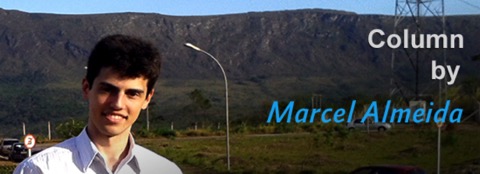
The shutdown of analog TV broadcast and operation only in digital modulation in high definition is taking place gradually. We hope that in 2016, the analog TV shutdown program arrives in large cities such as São Paulo, Belo Horizonte and Rio de Janeiro.

After seven years of the first digital television broadcasting in Brazil, finally it was published in the Official Gazette, by the Ministry of Communications, the shutdown schedule of the analog signal in Brazil. The process is taking much more than it was planned before, now the task may complete in late 2018.
One of the biggest difficulties in this process is related to the geographical dimensions that Brazil has. There are numerous cities and each should have a coverage plan that makes users continue to receive the signal and watch their televisions.
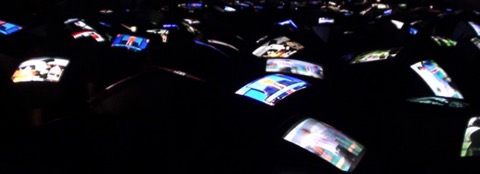
In my opinion, the choice for the first capital to take off the analog signal has been known and streamlined, taking into consideration that Brasília is geographically flat, facilitating signal implementation with few repeaters.

The numbers are promising. In the first step of the program, 60% of the population will no longer have the analog signal. Subsequently, on November 25, 2018, will begin the final stage of the switch off. But I believe that as more cities have the technical feasibility by Anatel, the execution and retransmission may shutdown the analog signal before scheduled.
Those who have not migrated to receive the digital signal, will be without television.
That is the price to pay for the development of systems and is well compensated when you see the difference between the two types of technology.

It is important to know that there is another factor that drives the fact that the switch-off should come as soon as possible!
With the switch-off, the radio frequencies in the 700 MHz band will be released for mobile operators use for 3G and 4G services. The 700 MHz band has superior range to currently used and is therefore cheaper.

A question that may come to mind of the viewer is – When the analog signal will be shutdown where I live?
Thinking about it, TV stations should inform the deadline date of the analog signal and the digital programming channel.
Disclosure begins with a year in advance and will be performed in two ways: through a stripe with fixed text or moving; and the logo of analogue television with indication of the digital transmission channel. Something that will catch the attention of the viewer.
In both cases the display will last 30 seconds and follows a schedule that begins with three daily inserts and reaches 18, one month before the shutdown. In the two months prior to the shutdown is expected even a countdown that will be permanently on the screen. So if the system is not prepared for the new signal, it is time to update.

The text posted on the stripe will have the date of the shutdown and the website address on the Internet and a central free telephone service for information - to be defined by GIRED (Group of Implementation of Digitalization).
As each viewer watches TV at different time, the inserts should be distributed by one third for each period of the day: in the morning (7am to 12pm), afternoon (from 12pm to 6pm) and evening (from 6pm to 11pm).
Of course, to achieve the greatest number of viewers the information should also be transmitted on the signal of broadcast channels on cable television.
Another challenge is to end the simulcast (digital signal exactly the same as analog). As the shutdown messages will only be transmitted in analog signal, it will be necessary to adapt the generation of analog and digital signals to transmit different images.

As this change affects everyone, it will be very important to have advertising campaign for clarification to the public about the shutdown of the analog signal, including broadcast television, at least one year before the start of the process.
Check out the government's schedule for the shutdown of analogue TV:
• November 29, 2015: Pilot - Rio Verde (GO)
• April 3, 2016: Brasília (DF)
• May 15, 2016: São Paulo (SP)
• June 26, 2016: Belo Horizonte (MG)
• August 28, 2016: Goiânia (GO)
• November 27, 2016: Rio de Janeiro (RJ)
• June 25, 2017: Curitiba (PR), Florianópolis (SC) and Porto Alegre (RS)
• July 30, 2017: Salvador (BA), Fortaleza (CE) and Recife (PE)
• August 27, 2017: Campinas (SP) and Ribeirão Preto (SP)
• September 24, 2017: Vale do Paraíba (RJ) and Santos (SP)
• October 29, 2017: RJ Interior and Vitória (ES)
• November 26, 2017: São José do Rio Preto (SP), Bauru (SP) and Presidente Prudente (SP)
• July 1, 2018: Manaus (AM), Belém (PA) and São Luís (MA)
• July 29, 2018: Natal (RN), João Pessoa (PB), Maceió (AL), Aracaju (SE) and Teresina (PI)
• August 26, 2018: Campo Grande (MS), Cuiaba (MT) and Palmas (TO)
• November 25, 2018: Porto Velho (RO), Macapa (AP), Rio Branco (AC), Boa Vista (RR) and other cities.
But this schedule may change… The decree 8061/13 says that the switch-off may be more flexible, watching the new realities of the market, taking into account the use of frequency for LTE and putting in installments shutdown signal. So we will have more time to update our systems, to a near future to the deadline in 2020, contrary to the previously deadline.

However, other details are highlighted as the problem with the bandwidth occupation, we highlight all the North and Northeast capitals, except Fortaleza (CE), Recife (PE) and Salvador (BA). I believe it is necessary to deepen more studies to establish the switch-off, then pulling the deadline for 2018 between the capital cities. As there is greater demand, there is greater consumer channels in the spectrum, precluding a simple reorganization.
An example involving the local terrain, is what happens in Palmas (TO), where there is problem of location of transmission towers outside the radius of 2 km, off-location, but that can be solved with technical solution. In São Paulo (SP) it works, because there transmitters with more than 2 miles away with optimal functioning.

In research conducted, TV Globo already claims to have digital coverage of 50% of the population. Digital TV extension is much faster, but can not do at a time as low as the switch-off schedule.
The director of engineering at TV Globo, Liliane Nakonechnyj says the dynamics of the TV market is different from telecommunications, which have investment and intensive revenue. And that in fact that the change of technology, which allows the adjustment to new infrastructure, advances differently to the consumer: as a cell has short shelf life (about two years), a TV set is about ten years.
That digital is here to stay, everyone already knows. What actually is the focus is the transition project well done with future projections and perform in a timely manner. These factors are the key points for a deployment well made in Brazil. As has happened with the transition from black and white TV to color TV, we are facing a new era where broadcast, audio and video is bordering the newest art of technology with higher quality.
We would like to thank Marcel Almeida for writing for us.
More info you can find on his LinkedIn: br.linkedin.com/in/marcelmg77/en or follow him on Twitter @marcelmg77
Mentioned:
Anatel
Ministry of Communications (MiniCom)
TV Globo
Who earned some big R$ at the Worldcup?
Did Brazilians and Brazilian Audio Visual companies some business.

I remember before the Worldcup Soccer started the international media told that Brazil would not be ready in time. I visited the Itaquera stadium in São Paulo 1,5 month in front of the start of the Worldcup myself and that did give me more trust that all will be finalised in time. Of course lots of things had to be done, but Brazil would manage this, I never doubted that. I was afraid of Brazilian audio visuals and companies not getting jobs at the Worldcup because of their knowledge of English, because of the import-tax they have to pay for professional equipment while foreign companies just import their equipment temporary and not paying the import tax. Was I wrong? No, I was right and that is sad.

Several foreign companies and broadcasters took major parts of the Worldcup AudioVisual work. Like the Euro Media Group. They bring equipment, people (120) and their OB-vans to Brazil because their price is maybe better than Brazilian companies and that is weird. A company like NEP from the USA has an OB-van in Brazil, they work together with the Brazilian company Casablanca Online.

Ok…Globo SporTV had a new OB-truck you say? but they have money (a lot) and very important connections. Also in smaller productions we heard that most foreign ENG crews brought their own people and equipment to Brazil. Of course Brazilian audio visuals and companies were working at the event and even sometimes for foreign companies but still the 'sharks' did far better I think. There is always involvement of foreigners.

We are curious at Broadcast Brazil if you did work at the Worldcup, what was your function and if your payment was alright.
Next big event will be the Olympic games in Rio de Janeiro in already 2 years, now we all know what's about … be prepared, Let somebody with connections in Brasilia mention the position of the Brazilian Audiovisuals and stop this 'temporary import' for such events so also the locals get a chance. For all other i can just say.. rehearse your english till you are on a good level. When you try to work at big international events like Formula 1, UFC , X-Games and such let yourself pay in wages compared to foreign ones. They expect the same quality so let yourself pay for it i the same way.
UPDATE 30 of March 2015:
BBC -Worldcup leaves Brazil with bus depots and empty stadiums
UPDATE 25 of March 2015:
Rapid TV News - Globo profits dip despite Worldcup
René Schaap
More info you can find on his LinkedIn: br.linkedin.com/in/connectingmedia follow him on Twitter René_Schaap
mentioned:
World Cup soccer 2014
Euro Media Group
NEP
Casablanca Online
Olympic Games
SD - HD - 4K - 8K?
Can we all financially catch up in Brazil

My first column for Broadcast Brazil is about formats… no… i am putting it not right here. It is mainly about the speed of development in this last 10 years of audio visual formats and what this means for Brazililian Audio Visual companies.
When i started my work in Broadcast we have had some formats. U-matic, C-format and Betacam SP. The company where i worked for at that time had to switch their recorder between edit-suites and OB-vans all the time. The Betacam recorders where pretty expensive and my boss just did not have financial possibilities enough to keep them in one place. But life was easy and clear in the analog SD (standard definition) time and as a company you had the chance to earn back these recorders by renting them as much as possible for the next 5-8 years… or even longer.

In 1993 we got Digibeta, Betacam SX in 1996 , Mpeg IMX in 2001. Meanwhile HD (high definition) was set into the market. Last 6 years HD became the standard for most Broadcasters, also in Brazil where the XDCAM HD format is used by TV Globo. In some parts of the country they still shoot and edit in SD but this is changing rapidly in Brazil.

Last 5 years the industry also pushes a 3D format to Broadcasters and consumers, but is seams that this is not something that will stay much longer… why? I think because of those glasses you need to put on….. but also because 1 new format just started to become mainframe…. 4K, and the first 8K demo's could already been seen at the last 3 versions of the IBC exhibition in Amsterdam.

In the last 10 years most broadcasters needed first to step from SD to HD, some of them just managed this last year. Even a big event like Formula 1 has it's first year of HD, besides the camera's on the cars which are still SD. The first 4K equipment enters the market rapidly, it means that broadcasters have to invest heavily again?… by knowing the 8k format can be available in some years from now. I think for most broadcasters this is too fast, the investments are too big. Not only the equipment but all what is connected to it has to change. This means some troubles ahead for a lot of companies because, who has a bag of money or a sponsor can invest in these latest formats. The ones who cannot will see their company shrinking or even disappearing.

With the Worldcup 2014 Brazil coming up a lot of Brazilian audiovisual companies have to step up to at least HD. With the tax the government puts on pro-equipment it is already difficult to invest in Brazil. In 2016 the olympic games will be held in Rio de Janeiro and of course this needs to be transmitted in 4K.. some major companies will push this for sure. I think that most Brazilian Audio Visuals do not have that bag of money again in 2016 and will loose a lot of opportunities to foreign companies (the sharks) . For the local market i think it is more honest to transmit the Olympics in HD, just to give the Brazilian Audio Visual world some support so they can be the event at this very important event for the whole country.
videos:
photos:
Check also some 8K equipment seen on the IBC this year.
René Schaap
More info you can find on his LinkedIn: br.linkedin.com/in/connectingmedia follow him on Twitter René_Schaap
mentioned:
U-matic
C-format
Betacam SP
Digibeta
Betacam SX
Mpeg IMX
XDCAM HD
4K
8K
IBC exhibition